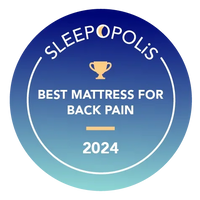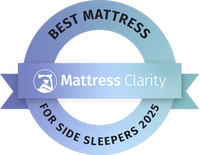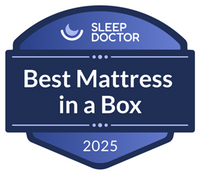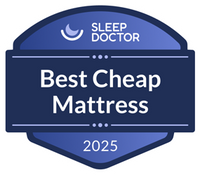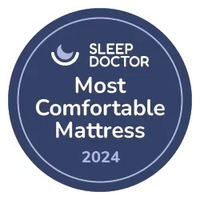Best Mattress for Lower Back Issues: Improve Your Sleep Quality Tonight
Hey, let me guess—you're fed up waking with that nagging lower back pain, right? Trust me, I've been there too. Finding the best mattress for lower back issues might be your game-changer, helping you wake refreshed instead of sore. Let’s dive right in and figure out how you can dramatically boost your sleep quality starting tonight.
Why Spine Alignment Matters
Keeping Your Spine Happy and Neutral
Ever wondered why sometimes you wake up feeling more tired than when you went to bed? It might be because your spine isn't aligned properly while sleeping. When your spine isn't neutral, your muscles strain to compensate, leaving you sore by morning. A good mattress keeps your spine relaxed and aligned, making sure you're comfortable all night.
Think of it this way—your spine needs a gentle hug, not a wrestling match. Whether you're a side, back, or stomach sleeper, having a mattress that gently supports your spine makes a big difference. So, if you’re waking up achy, the problem might just be under you, literally.
What Does "Neutral Spine" Even Mean?
A neutral spine means your spine is in its natural, relaxed shape—not overly curved or overly flat. Imagine lying flat on the floor comfortably—that's the kind of position your mattress should help you achieve. The best mattress for lower back issues helps you maintain this natural position, significantly reducing discomfort.
Ever thought why chiropractors emphasize spine alignment? Exactly—because it prevents stress on your muscles and joints, promoting better rest and less pain. Keeping your spine neutral isn't rocket science; it's just smart sleep practice.
Finding Your Ideal Mattress Firmness
Medium-Firm Might Be Your Best Friend
When it comes to mattress firmness, one size definitely doesn't fit all. However, research consistently shows medium-firm mattresses hit that sweet spot for most folks with back pain. They're soft enough to contour your body but firm enough to hold you steady—just like your best friend, supportive yet comforting!
Let's be real here—have you ever tried lying on something too soft or too firm? Neither feels great for long. So test out a medium-firm option first; it usually provides that perfect balance between support and softness your back will thank you for.
Your Comfort Is Personal—Seriously
Comfort isn't a universal concept—it's highly personal. Some people adore sinking into soft beds, others prefer something sturdier. It’s important to try different mattresses to see what genuinely feels best. A mattress that feels perfect for your friend might not work for you, even if it’s labeled as ideal for lower back issues.
Remember, it’s your sleep and your back—go ahead and prioritize personal preference when choosing your mattress. The best mattress for lower back issues is the one that feels amazing to you, plain and simple.
Must-Have Mattress Features
Pressure Relief and Proper Support
Want to know the real secret to avoiding morning backaches? Two words: pressure relief. A mattress that evenly distributes your body weight reduces painful pressure points. Mattresses like memory foam or hybrid styles contour beautifully to your shape, alleviating stress from joints and sensitive areas.
Ask yourself this: have you ever felt uncomfortable pressure on your hips or shoulders at night? A quality mattress should ease that discomfort. Features like zoned support systems, multiple foam layers, or adaptive coils can provide precisely the kind of relief you need.
Why a Generous Trial Period Is Non-negotiable
Honestly, how can you tell if a mattress is perfect for you in a quick store test? Simple answer: you can't. That's why generous trial periods, typically lasting 100 nights or more, are essential. You deserve enough time to really test your mattress in real-life conditions, not just five awkward minutes in a showroom.
Also, look out for hassle-free returns—this flexibility ensures your search for the best mattress for lower back issues is risk-free. After all, nobody wants to get stuck with something uncomfortable and expensive, right?
Popular Mattress Options to Ease Your Lower Back Pain
Hybrid Mattresses—Comfort and Support Combined
If you're struggling with lower back issues, hybrid mattresses are fantastic. They blend traditional innerspring coils with soft foam layers, providing optimal bounce and support. Brands like Saatva Classic and Leesa Sapira Hybrid are top performers, designed specifically to soothe back pain while keeping you comfortably cool all night long.
Here's a quick comparison of popular hybrid mattresses:
| Brand | Firmness Level | Trial Period | Price Range |
|---|---|---|---|
| Saatva Classic | Medium-Firm | 180 nights | $850 - $1700 |
| Leesa Sapira Hybrid | Medium-Firm | 100 nights | $1200 - $1900 |
| Medium-Firm | 100 nights | $500 - $900 |
Latex Foam Mattresses—Naturally Good for Your Back
Eco-conscious? Consider a latex mattress. Models like Zenhaven Latex offer naturally breathable and durable comfort, making it ideal for people with sensitive backs. Plus, latex mattresses often let you customize firmness, ensuring you find that just-right feel.
And seriously, who doesn't appreciate an eco-friendly option that genuinely improves sleep quality?
Your Sleep Position Matters More Than You Think
Advice for Back Sleepers
If you sleep mostly on your back, you need a mattress that fills the natural curve of your spine, especially around the lower back. Medium-firm mattresses generally offer the right blend of softness and support, keeping your lumbar region happy and pain-free.
Ever woken up with a sore back even after a full night's sleep? Yeah, that's your mattress failing to support your sleeping position adequately.
Side Sleeper Strategies
Side sleepers, listen up—you'll need a mattress that cushions your hips and shoulders without sagging. A slightly softer mattress works best, but beware of going too soft. Excess softness can twist your spine into unnatural positions, worsening lower back pain.
Imagine your mattress as a gentle cradle—it should support and comfort your body evenly, preventing unnecessary aches.
Extra Tips for Pain-Free Sleep
- Strategically use pillows under your knees or between your legs to enhance spinal alignment.
- Keep a regular sleep schedule to stabilize your internal clock.
- Regular core-strengthening exercises can significantly alleviate lower back pain.
Frequently Asked Questions (FAQs)
How Long Should I Test a Mattress Before Deciding?
I recommend at least 30 days, but longer trials of around 100 days give you the best chance to know if it truly meets your comfort needs.
Can Pillows Actually Alleviate Lower Back Pain?
Absolutely! Placing a pillow under your knees or between your legs can significantly improve spinal alignment, reducing lower back stress. Simple solutions often provide powerful relief.
Do I Need a New Mattress Even if Mine Feels Fine?
It’s wise to replace your mattress every 7-10 years. Over time, the supportive materials degrade, often subtly contributing to back pain—even if you don’t immediately notice. Think of it as preventive maintenance for your body.









